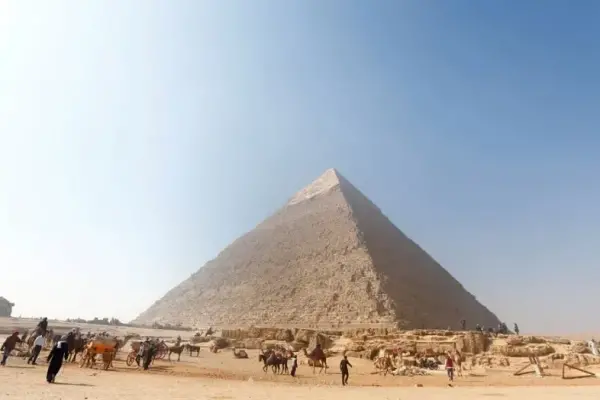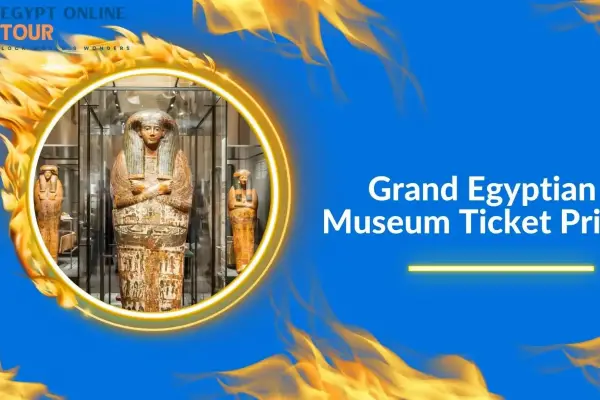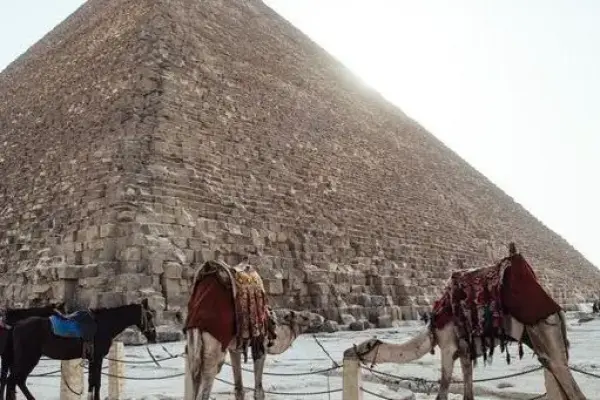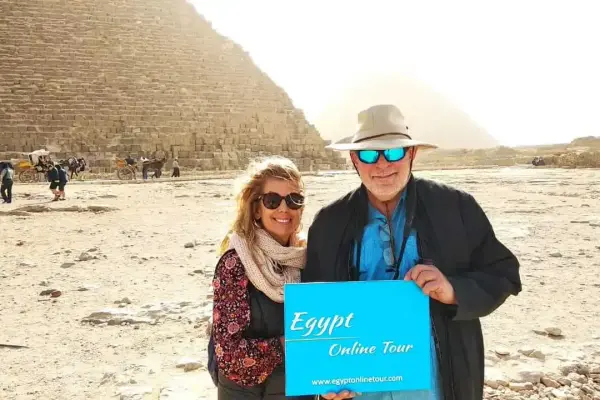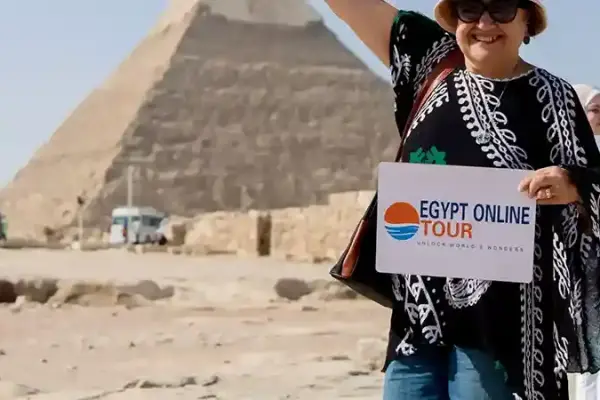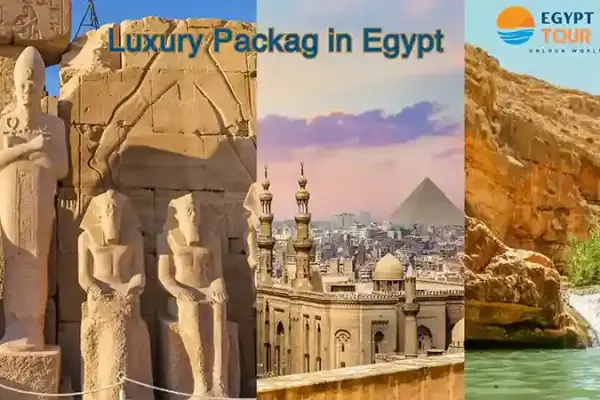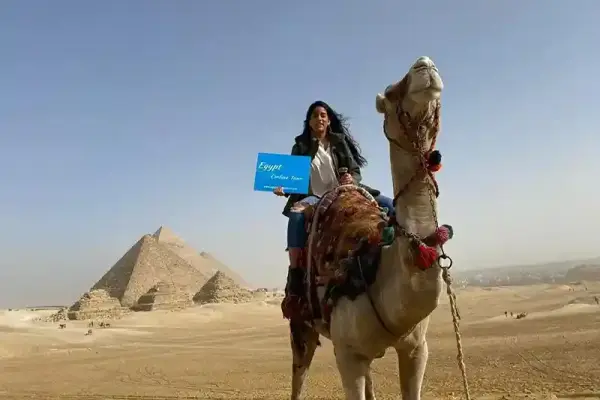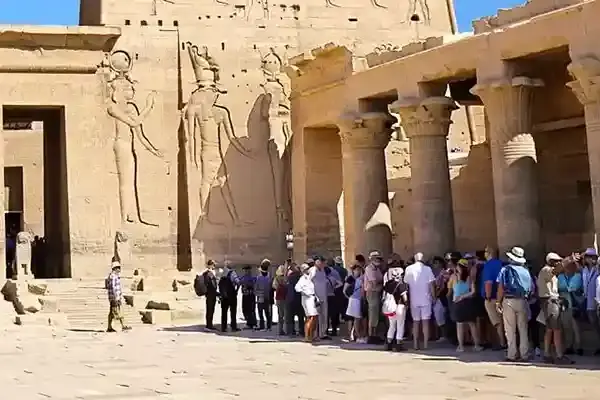How many wives did King Ramses II have| Find Out Now
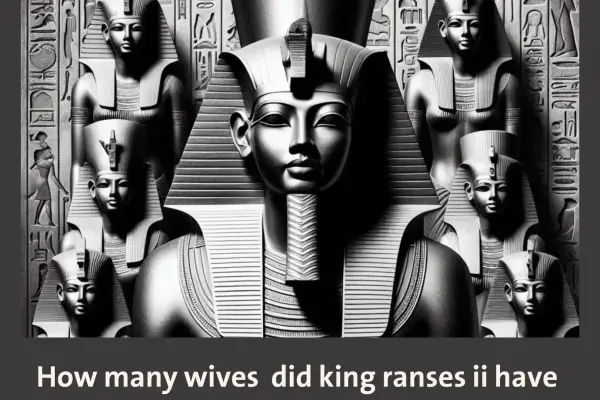
- Feb 03, 2025
- Ancient Egyptian Civilization
- 3,192
Imagine a king whose reign became a legend, a pharaoh whose life was one of grandeur, glory, and enduring impact. Ramses II, Ramses the Great, is one of the most famous and elusive personalities in ancient Egypt's past. With how many wives did King Ramses ii have and long and glorious life, filled with colossal success, intrigue in private life, and triumphs in battles, Ramses strengthened Egypt's position as a dominant empire. With comparisons drawn with such illustrious leaders in history, one cannot but try to emulate a path that shaped the direction of civilization in its entirety.
From the breathtaking sequence of wives and children whom he bore to his breathtaking architectural structures, Ramses II's life is one of unparalleled drive and determination. As Dr. Zahi Hawass, a renowned Egyptologist, testified, "Ramses was not a king; he was Egypt."
Table of contents [Show]
- Who is Ramses II?
- How many children did Ramses II have ?
- How long did Ramses II rule
- When was Ramses II born and died?
- What were Ramses ii accomplishments?
- How many wives did Ramses II have at age 18?
- how many wives did King Ramses ii have
-
Why is her tomb considered one of the most beautiful in Egypt?
-
Queen Isis Nofret: The Great Royal Wife of Ramesses II
- Her Royal Titles
- Her marriage to Ramesses II
- Her sons and their significance
- Her dating with the sons of Ramesses II
- Her position inside the royal court
- Her statues and monuments
- Her demise and burial place
- Her Legacy in History
- Her dating with spiritual deities
- Her position in political life
- How was she diagnosed in Egyptian antiquities?
- Her dating with Queen Twosret
- Queen Maat Hor Neferu Ra: The Princess Who Became Queen
-
Queen Bent-Anat: The Princess Who Became a Royal Wife
- Her call means:
- 1. Her origins and lineage
- 2. Her marriage to her father Ramesses II
- 3. Her Royal Titles
- 4. Her role inside the royal court
- 5. Her dating with the relaxation of the royal own circle of relatives
- 6. Where is she cited in Egyptian antiquities?
- 7. Did she have kids?
- 8. Her destiny and dying
- 10. Why don’t we understand her?
-
Queen Hatti: The Mysterious Wife of Ramses II
- 1. Her origins and lineage
- 2. The Peace Treaty and Her Marriage to Ramesses II
- 3. Her Royal Titles
- 4. Did she have political influence?
- 5. Did she endure kids to Ramesses II?
- 6. Where did she seem in Egyptian antiquities?
- 7. Her dating with the relaxation of the girls of the royal palace
- 8. Her destiny and death
- 10. Why will we now no longer realize lots about her?
- What did Ramses II do
- Why was Ramses ii important?
- FAQ
- Conclusion:
Who is Ramses II?
Ramses II, additionally referred to as Ramses the Great, became one in every of Egypt’s maximum effective and lengthy-ruling pharaohs. According to Joyce Tyldesley in Ramesses: Egypt’s Greatest Pharaoh, he dominated for sixty six years (1279–1213 BC) and left an unrivaled legacy of navy victories, grand temples, and political influence.A Mighty RulerTyldesley describes him ashaving a "grasp of propaganda", making sure his call and achievements have been recorded throughout Egypt. His navy campaigns, especially the well-known Battle of Kadesh, have been closely promoted in temple carvings. As Tyldesley states, "Ramses converted a luxurious stalemate into a wonderful triumph withinside the eyes of his people."
Builder of Monuments
Ramses II became additionally a prolific builder. His most well-known monument is Abu Simbel, with large statues of himself carved into the rock. Tyldesley explains, "His statues have been designed now no longer simply to impress, but to immortalize his divine status."
A Pharaoh Who Became a Legend Even after his death, Ramses II’s legacy continued. Tyldesley notes, "His call remained synonymous with kingship lengthy after his frame became laid to relaxation withinside the Valley of the Kings.
" His mummy, found withinside the nineteenth century, found out a person of sturdy build, confirming his larger-than-lifestyles reputation. Ramses II become greater than only a king—he becomes a legend, shaping Egypt’s records with power, strategy, and a long-lasting picture of greatness.
Watch how great was Ramses 2 within Egypt Luxury Tours
How many children did Ramses II have ?
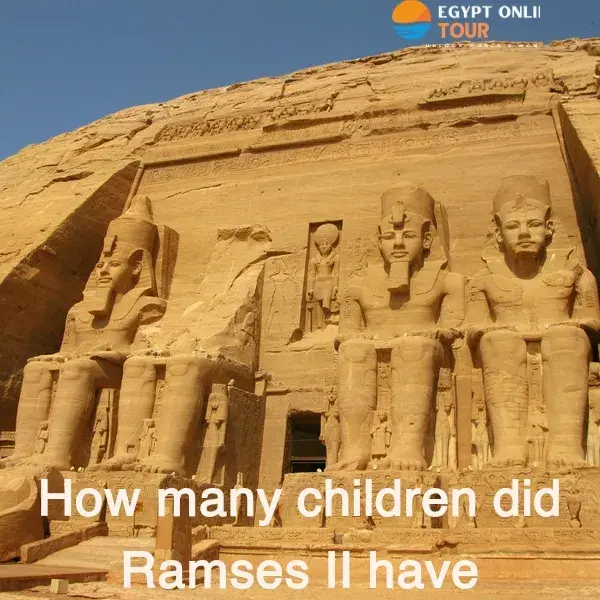
Ramses II is assumed to have had one in all the biggest royal households in historical history. According to Ramesses: Egypt’s Greatest Pharaoh with the aid of Joyce Tyldesley, "he fathered around one hundred youngsters, along with each son and daughters". A Father of Many
Tyldesley states, "Ramses II ensured that his youngsters have been given prestigious roles within the kingdom, securing his dynasty’s future." His sons regularly held navy and priestly positions, even as his daughters performed key roles in spiritual and diplomatic matters.
Notable Children
Some of his maximum well-known youngsters include:
• Amun-her-khepeshef – His eldest son and crown prince.
• Khaemweset – A fantastically reputable priest and scholar. Tyldesley describes him as "one of the finest intellectuals of his time."
• Merneptah – The thirteenth son who sooner or later succeeded Ramses II as pharaoh.
Despite his many youngsters, few outlived him because of his highly lengthy reign of sixty-six years.As Tyldesley notes, "Ramses’ durability intended that lots of his heirs by no means had the risk to rule."This huge royal circle of relatives helped solidify Ramses II’s legacy, making sure his call and bloodline remained influential in Egyptian history which can be seen it in reality through 8 Days Cairo to Abu Simbel and Back Overland .
How long did Ramses II rule
Ramses II dominated Egypt for sixty-six years, from 1279 to 1213 BC. According to Ramesses: Egypt’s Greatest Pharaoh through Joyce Tyldesley, this changed into one of the longest reigns in historic Egyptian history.
A Reign of Power and Stability
Tyldesley describes his rule as "a golden age of navy strength, huge building, and political influence." His lengthy reign allowed him to make Egypt's borders, beef up its economy, and go away in the back of top-notch monuments like Abu Simbel and the Ramesseum.
Outliving His Heirs
Due to his longevity, lots of his youngsters and heirs died earlier than him.Tyldesley notes, "By the time of his death, Ramses had outlived lots of his sons, leaving the throne to his thirteenth son, Merneptah."His sixty-six-12 months of rule cemented his popularity as one every of Egypt’s best and maximum enduring pharaohs, incomes him the title "Ramses the Great."
When was Ramses II born and died?
Ramses II was born in 1303 BC and died in 1213 BC at the age of approximately ninety years.
A Long Life for an Ancient Pharaoh
According to Ramesses: Egypt’s Greatest Pharaoh via way of means of Joyce Tyldesley, Ramses II lived a very lengthy lifestyle for his time. Tyldesley states, "Few kings, historical or modern, have matched Ramses’ notable sturdiness and capacity to rule with such dominance."
What happened to Ramses II? Death and Legacy
Ramses II handed it away in 1213 BC, in all likelihood because of the antique age. His mummy, found within side the nineteenth century, confirmed symptoms and symptoms of arthritis and dental issues, suggesting he suffered from age-associated illnesses in his very last years. Tyldesley notes, "Even in loss of life, Ramses’ stays endured to command respect, as his mummified frame became cautiously preserved and later reburied to guard it from tomb robbers."His loss of life marked the cease of an era, however, his legacy as one of all Egypt’s finest pharaohs nevertheless lives on which can be touched in reality in the Grand Egyptian Museum Tour .
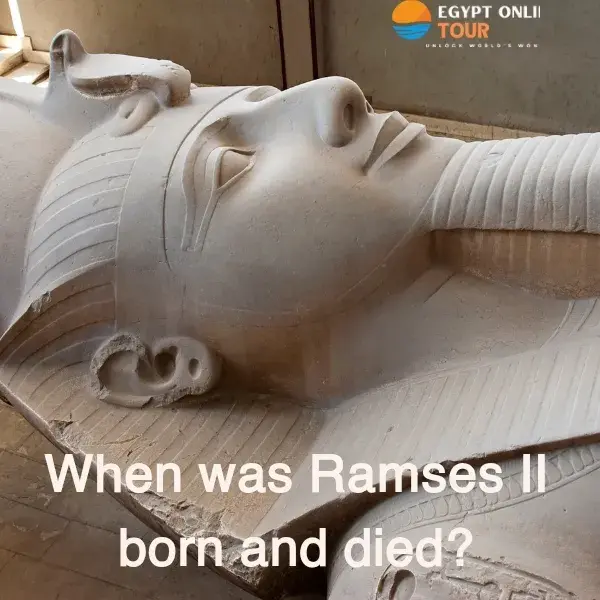
What were Ramses ii accomplishments?
Ramses II, additionally referred to as Ramses the Great, is taken into consideration one of all historic Egypt's maximum achieved pharaohs and the Egyptian Empire Time Period.
His achievements spanned army conquests, enormous structure, and political management. Here are a number of his most important accomplishments, as defined in Ramesses: Egypt’s Greatest Pharaoh through Joyce Tyldesley and primarily based totally on historic sources:
1. Military Achievements
Ramses II is famed for his army campaigns, especially his warfare against the Hittites at Kadesh in 1274 BC. Although the warfare resulted in a stalemate, Ramses skillfully spun it right into a victory and used it for political gain. Tyldesley describes him as "a grasp of propaganda," making sure the warfare’s narrative portrayed him as the hero.
• He led many hit campaigns, extending Egypt's borders and securing Egypt’s control over areas like Canaan, Syria, and Nubia.
• Ramses’ army prowess solidified Egypt's energy and had an impact on the historic world.
2. Monumental Architecture
Ramses II changed into a prolific builder, leaving behind a legacy of grand temples and monuments that also stand today as Advanced Cities In Ancient Egypt .
• The Abu Simbel temples, carved into the mountainside, are his maximum well-known creation project.Tyldesley notes that Ramses "ensured his statues had been designed now no longer simply to affect however to immortalize his divine reputation."
• He additionally constructed the Ramesseum, a huge mortuary temple, and contributed to the development of the Temple of Karnak, making it one of the most amazing complexes in Egypt.
• Ramses’ creation tasks symbolized Egypt’s wealth and balance below his rule.
3. Political Stability and Diplomacy
Ramses II delivered political balance to Egypt after a length of turbulence and changed regarded for his diplomatic skills.
• His well-known peace treaty with the Hittites after the Battle of Kadesh is taken into consideration one of the first recorded peace agreements in history. The treaty, signed in 1258 BC, lasted for generations and helped preserve peace among the 2 amazing powers.
• Tyldesley explains, "Ramses used international relations as efficiently as he used the army might." He married numerous princesses from overseas lands, cementing political alliances and making sure Egypt had an impact on them.
4. Cultural and Religious Contributions
Ramses II changed into a client of the humanities and religion, selling the worship of gods and reinforcing Egypt's divine monarchy.
• He built temples devoted to deities like Ra and Ptah, reinforcing Egypt's non secular practices.
• He portrayed himself as a residing god in his monuments, solidifying his reputation as a divine ruler withinside the eyes of the Egyptian people.
5. Longevity and Legacy
Ramses II’s rule lasted for an extremely good sixty-six years, making him one of the longest-reigning pharaohs in Egyptian history.
• His lengthy reign allowed him to create a long-lasting effect on Egypt’s culture, economy, and army.
• Tyldesley writes, "Ramses’ call remained synonymous with kingship lengthy after his frame changed into laid to relaxation withinside the Valley of the Kings."
His dying marked the stop of any technology, however, his legacy endured, influencing the destiny of pharaohs and leaders.
6. Ramses II family
Ramses II fathered around a hundred youngsters and ensured his heirs had been organized for management roles. His thirteenth son, Merneptah, succeeded him as pharaoh after his dying.
Ramses II’s accomplishments had been sizable and varied, from army victories to enormous structure and diplomatic achievements.
As Tyldesley concludes, "Ramses the Great converted Egypt right into a superpower, leaving a legacy that might last for millennia." His reign described a technology of prosperity and energy for Egypt, making sure his region as one of the best pharaohs in history.
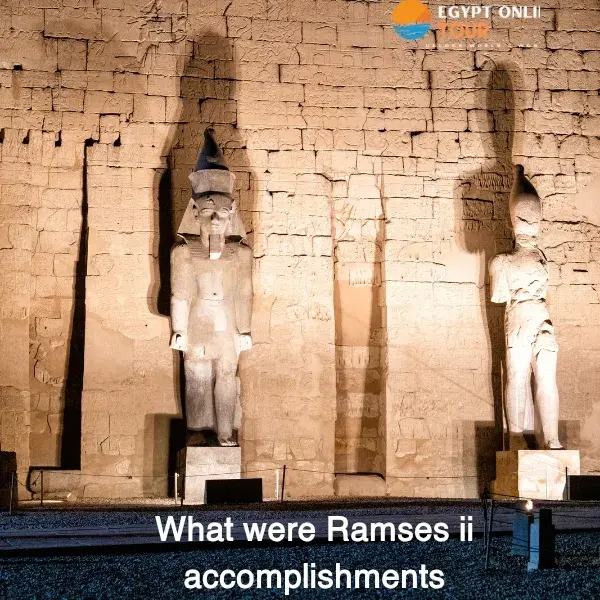
How many wives did Ramses II have at age 18?
By the time Ramses II turned 18 years old, he had already married as a minimum other half:
1. Queen Nefertari – She turned into his first and maximum liked spouse, conserving the name of Great Royal Wife.
2. Isetnofret (Isis-Nofret) – Another critical spouse who has become the mom of his successor, Merneptah.
While Ramses II subsequently had over two hundred other halves and concubines at some point of his lengthy reign (which lasted approximately sixty-six years), at age 18, he turned it nonetheless early in his kingship and probably had most effective those number one other halves at that point.
how many wives did King Ramses ii have
According to the book "Ramesses: Egypt's Greatest Pharaoh" via way of means of historian Joyce Tyldesley, Ramesses II had a huge wide variety of other halves, believed to wide variety round two hundred other halves and concubines.But amongst the how many wives did king ramses ii have, there had been some of main royal other halves, the maximum distinguished of which had been:
Queen Nefertari - Ramesses II's favorite and most famous wife
Queen Nefertari is one of the most and best-known queens in ancient Egypt, and Ramses' first and most cherished wife. She was renowned for her beauty and beauty, and for her role in court, a role no one else could ever have taken over. She inscribed an eternal mark in her glorious temple in Abu Simbel, a certain mark of Ramses' deep and everlasting love for her.
Nefertari's background and gene
Although in a high rank, no information regarding Nefertari's family and origin can be confirmed. She was not mentioned in relation to a king's daughter, and not of the birth of a king, and for that reason, it can be argued that she could have a noble family background and a state of high rank.
Her marriage with Ramses II
Nefertari wed Ramses II even when not yet a pharaoh, and it is suspected that she wed him at the beginning of his reign, even when not yet a pharaoh. She held a prestigious position at court even at the beginning, for she was a Great Royal Wife, a position extended to the most powerful wife out of all female courtiers at court.
Her name in full attire:
"Nefertari Merit-en-Mut" means "The Beautiful One Accompanied by Love"
Here is an expression of the regard and love she enjoyed with her king husband.
Her role in the state
Nefertari is not only a consort but a political and diplomatic supporter, a political and diplomatic supporter and ally in fact, in:
- Diplomatic letters: She played an important role in letters with neighboring kingdoms, including with Hittites, and her letters showed the consideration and diplomatic influence she enjoyed.
- Attending Ramses II in festivities: She showed up in numerous inscriptions with Ramses in important events, suggesting that she enjoyed a high rank.
- Her religious role: She adopted the title "Lady of Upper and Lower Egypt" and played an important role in rituals, specifically in rituals for goddess Hathor, who was considered the goddess of beauty, love, and music.
- The most striking feature that carves her in eternal memory: the Abu Simbel Temple
Ramses II commissioned a grand temple for Nefertari in a position alongside his colossal temple at Abu Simbel, one of the most beautiful of all of the ancient Egyptian temples.
Her Royal Names
- Queen Nefertari held many titles that signified her rank and position in court, including:
- The "Great Royal Wife" – an honorific title that conveyed that she was Ramses II's chief wife
- "Queen of Upper and Lower Egypt" – symbolizing her state sovereignty
- "Beauty Lady" – a tribute to her unmatched beauty
- "Beloved of the goddess Mut" – an expression of her position in devotion
What distinguishes the temple:
The dedication "For him for whom the sun arises" is inscribed, in a demonstration of Ramses' deep devotion towards her.
Her statues stand roughly the same height as Ramses' statues, an atypical feature, for a wife's statue, being smaller, represented the level of her high rank.
Discovery of her tom
Nefertari's tomb was discovered in 1904 by Italian excavator Ernesto Schiaparelli. Nefertari's tomb preserved numerous wondrous ornamentation, but it happened to have been looted since ancient times, and Nefertari's mummy could not be found, but part of her belongings, such as parts of a coffin and jewelry, can today be visited in museums.
Nefertari continues to rank amongst the greatest queens of Ancient Egypt, and her temple and tomb stand witness to her position in the affections of the Ancient Egyptians and her adored king Ramses II.
Watch this real magic through 15-Day Classic Tours of the Wonders of Ancient Egypt .
Her Relationship with Beauty and Art
Nefertari was famous for her beauty, and she is represented in inscriptions in a temple and a tomb in regalia and a feathered crown, a mark of her nobility.
She enjoyed jewelry and ornamentation, and it is argued that she amassed a collection of most regal jewelry.
Her beauty was portrayed in a sophisticated style in age-old style, specifically in her tomb, one of Egypt's best works of art even in modern times.
Was she a scholar and a pen?
Nefertari was an educated and sophisticated woman, an achievement for a female during that period of time.
Some inscriptions even claim that she could both read and write in hieroglyphs, and through them, she could contribute to diplomatic messages with Hittite monarchs and others.
What singled her out among Ramses II's numerous wives?
Nefertari, one of Ramses' many wives, but one whom Ramses preferred, and one can see through:
- He even built an entire temple for her at Abu Simbel, a feat not many queens in Egypt have ever achieved.
- The ardent inscriptions Ramses inscribed for her, in which he inscribed in her temple: "For whom the bell tolls"
- She is portrayed in inscriptions at a height approximately equivalent to that of a king, a rank shared with no queens.
Did she have children?
We lack any confirmed information about her offspring's names, but she is suspected to have produced a number of offspring for Ramses II.
Neither of her two sons played a significant role in succession to the throne, for one of them, a son, replaced him with one of his secondary wives' offspring, Merneptah.
Nefertari's Missing Mummy: What Lurks Behind its Loss
Her Valley of the Queens (QV66) tomb has been discovered, but her mummy has not been discovered yet.
They say grave robbers stole it in the past, and nothing but a section of its mummified legs and a section of its royal coffin remain, and it is kept in the Egyptian Museum, in their view.
Why is her tomb considered one of the most beautiful in Egypt?
Nefertari's tomb is one of the greatest works of Architectural achievements of Ancient Egypt and art in the history of Ancient Egypt, due to:
- Its rich colors that have withstood to present
- The murals painted in walls, representing her adoring Egyptian god including Osiris, Isis, and Anubis
Her individualistic character, with walls totally painted with sweet pictures of her in her life in eternity.
Ramses II chose her to become one of his favorite queens
Her intelligence, beauty, and political and religious clout won for her a seat in him, regarded as most intimate in heart.
She was a wise and powerful queen and could secure a high rank in the king's court.
The marriage with Ramses, for Ramses, was not a marriage for mere marriage, but a marriage with accompanying respect and fondness, and this can be seen in the titles and inscriptions that Ramses granted her.
The Fall of Nefertari
Queen Nefertari died relatively early in Ramses II reign, and it is regarded that she died in Ramses' 24th, and possibly 25th, regnal year. However, Ramses' king did not forget her and kept speaking about her even in posthumous inscriptions.
She was buried in QV66, one of the most glorious and lovely of all of the royal tombs, whose walls feature exquisite artwork portraying the queen in the life to come, offering gifts to a number of the gods, including both Osiris and Isis.
Queen Nefertari continues to stand out as one of Egypt's greatest queens, not only for her beauty, but for her strong presence in the history of ancient Egypt, and for Ramses II's eternal witness of love for her.
Maybe like to read about: Egyptian Goddesses Amathaunta Facts
Queen Isis Nofret: The Great Royal Wife of Ramesses II
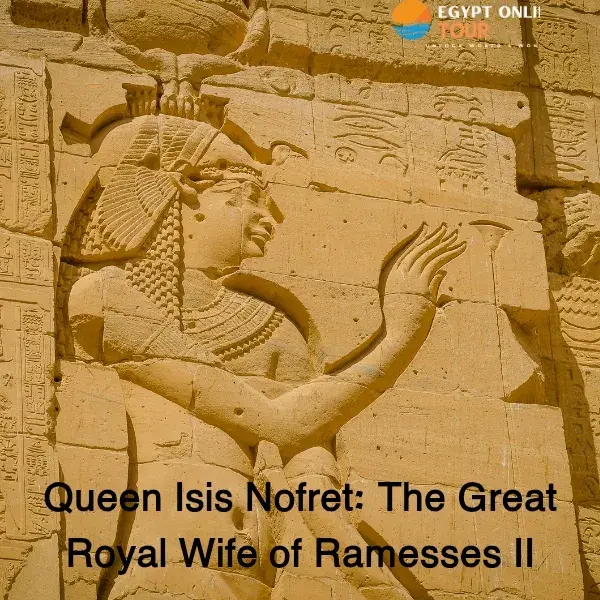
Queen Isis Nofret (or Isis Nefret) changed into one of the Great Royal Wives of Pharaoh Ramesses II, and held a prominent role withinside the royal court, despite the fact that Queen Nefertari changed into the favored and maximum well-known spouse. However, after the demise of Nefertari, Isis Nofret's position emerged as an effective queen and mom of the crown prince.
Her Royal Titles
Her call was called "Beautiful Isis", a call stimulated through the Egyptian goddess Isis, who changed into worshipped as an image of motherhood, magic, and protection.
Like any tremendous Egyptian queen, Isis Nofret held many royal titles, including:
- “Great Royal Wife” – a name she obtained after Nefertari’s demise.
- “Mother of the King” – a name that became even greater essential while her son Merneptah took over.
- “Lady of Upper and Lower Egypt” – a name that pondered her political and spiritual affect.
- "Beloved of Amun" - indicating her position in spiritual rituals.
Her origins and lineage
Not a whole lot is understood about Queen Isis Nofret's origins, and it has now no longer been indicated that she changed into royal blood. She might also additionally have come from a noble circle of relatives or from one of the influential households withinside the royal court.
Her marriage to Ramesses II
It is thought that Isis Nofret had become a spouse to Ramesses II early in his reign, however, she changed into now no longer the primary spouse, as Nefertari changed start the Great Royal Wife. After Nefertari's demise, Isis Nofret became his maximum essential spouse and changed into given outstanding royal titles.
Her sons and their significance
Queen Isis Nofret gave beginning to some of her sons who performed pivotal roles withinside the succession to the throne, including:
• Prince Ramesses (the eldest son of Ramesses II): He changed into the primary crown prince, however, died earlier than he may have to expected power.
• Prince Khaemwaset: He changed into an outstanding priest and liable for many architectural projects, however, he did now no longer expected the throne.
• King Merneptah: He became the pharaoh after the demise of Ramesses II, because of the demise of all of the heirs who preceded him.
Her dating with the sons of Ramesses II
Isis Nofret had some essential sons, however, it changed into her son Merneptah who took over the throne after his father's demise.
Although Prince Ramesses, her first son, changed into the crown prince, he died earlier than he may want to take the throne, which caused the succession to be exceeded to Merneptah.
Prince Khaemwaset, some other of her sons, changed into an outstanding spiritual and worldly discern of his time, and performed a main position inside the maintenance and recuperation of temples.
In this manner Isis Nofret changed into the mom of the following pharaoh of Egypt, giving her tremendous popularity as the "mom of the pharaoh" in her later life.
Her position inside the royal court
Although Nefertari changed into the maximum outstanding queen throughout the reign of Ramesses II, Isis Nofret changed into the queen who ensured the continuation of the ruling dynasty, as she gave beginning to the destiny of pharaoh Merneptah.
After Nefertari's demise, Isis Nofret's significance increased, and he or she might also additionally have performed a position in political affairs, in particular in elevating and teaching her sons to expect management positions.
Her statues and monuments
Isis Nofret no longer acquired the identical tremendous honor as Nefertari, however, there may be a few archaeological proofs that confirm her popularity:
- She appears in a few inscriptions along Ramesses II withinside the temple of Abydos.
- Statues of her had been observed withinside the essential temples.
- Her call changed into inscriptions at the partitions of the Ramesseum.
Her demise and burial place
The precise date of Isis Nofret's demise isn't known, however, she possibly died long earlier than Ramesses II.
She is thought to have been buried inside the Valley of the Queens, possibly in tomb QV51, however, her mummy has now no longer been observed.
Her Legacy in History
Queen Isis Nofret was one of the most influential ladies of the technology of Ramesses II, as she performed an essential position in ensuring the continuation of the royal circle of relatives' rule through her son Merneptah.
Her dating with spiritual deities
It changed into a not unusual place in historical Egypt for queens to be related to particular deities, and Isis Nofret changed into related to the goddess Isis, who changed into worshipped as an image of motherhood, fertility, and magic.
In a few inscriptions, she is proven to make services to the deities, suggesting that she performed a position in spiritual ceremonies.
Her position in political life
Although there may be little proof of her direct involvement in the guideline of thumb, Isis Nofret performed an essential position inside the balance of the royal dynasty.
Being the mom of Merneptah, the following pharaoh, the manner that she changed into maximum probably a guide to him in his early years.
It is probably that she changed into concerned in negotiations and political alliances withinside the palace, to make sure that her son changed into the rightful heir.
How was she diagnosed in Egyptian antiquities?
The call Isis Nofret has been observed in lots of archaeological sites, including:
The Ramesseum Temple – in which she is cited in royal inscriptions.
The Valley of the Queens – her tomb is thought to be positioned there.
The Abydos Temple Inscriptions – in which her call is cited as a Great Royal Wife.
Her dating with Queen Twosret
There are theories that advise that Isis Nofret changed into the grandmother of Queen Twosret, who later dominated Egypt on the give up of the Nineteenth Dynasty.
This reinforces the speculation that Isis Nofret had a far-attaining effect on the Egyptian ruling dynasty.
Isis Nofret changed into now no longer the simplest royal spouse, however, she changed into the mom of the pharaoh who dominated after Ramesses II, giving her tremendous popularity. She no longer attained the reputation of Nefertari, she changed into an essential pillar of the continuation of the ruling dynasty.
Although Queen Nefertari became the maximum well-known, Isis Nofret performed an essential position in securing the guideline of thumb after Ramesses II. Queen Maat-Hor-Neferure - One of his daughters whom he later married, a tradition that was common among pharaohs to preserve the royal blood.
Queen Maat Hor Neferu Ra: The Princess Who Became Queen
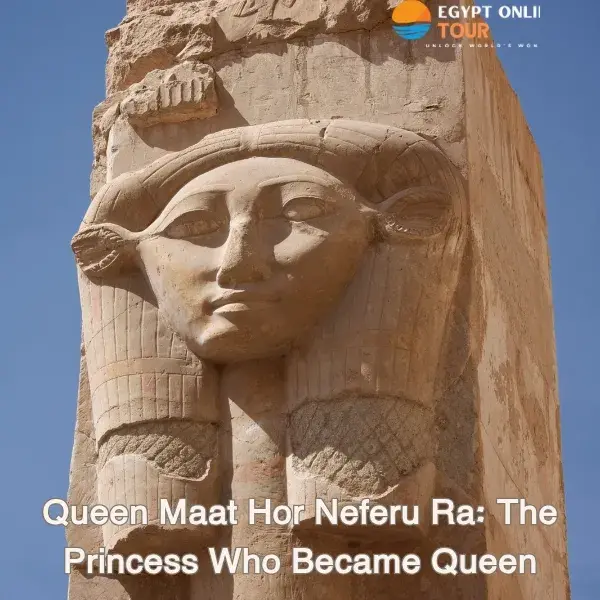
Maat Hor Neferu Ra became one of the daughters of King Ramses II, and it's believed that she later have become his royal spouse, as it is not an unusual place in a few pharaonic households to keep the royal lineage.
Her call means:
- "Maat is the adornment of Horus and Neferu Ra"
It displays her affiliation with the goddess Maat (image of justice and order), the god Horus, and the god Ra, indicating her spiritual and political popularity.
Her foundation and lineage
- She is thought to be the daughter of Ramses II, however, there may be controversy over the identification of her mom:
- Some researchers trust that her mom may also have been Queen Nefertari, considering the fact that her name consists of sturdy royal attributes.
- Others propose that she may also have been the daughter of one in all of Ramses' lesser-acknowledged other halves, which includes Isis Nofret.
To date, there may be no conclusive proof to affirm who her mom is, however, it's miles positive that she became one of the most outstanding royal princesses.
Why did she marry her father?
In historic Egypt, it was no longer unusual for pharaohs to marry their daughters or sisters, for numerous reasons:
- To shield the royal line from blending with non-royal households.
- To decorate spiritual and political legitimacy, because the pharaoh became believed to be the son of a god, and as a consequence marrying his daughter gave her unique sanctity.
- To keep energy withinside the royal family, as royal girls had been visible as a method of making sure balance withinside the rule.
There are inscriptions that can suggest that Maat-Hor-Neferure have become the spouse of Ramesses II after the loss of life of Queen Nefertari, however, she now no longer has the identical excessive popularity as her.
Her function inside the royal court
Although she is no longer the maximum well-known of Ramesses II’s other halves, she did keep a few critical royal titles, which includes:
- “Great Royal Wife” – indicating that she became a legitimate spouse, now no longer only a princess.
- “Daughter of the King” – a name that became simplest given to proper royal princesses.
- “Lady of Upper and Lower Egypt” – indicating her popularity as a critical queen.
She no longer played an outstanding political position like Nefertari or Isis Nofret, however she became a critical part of the royal family.
Did she have youngsters?
There isn't any proof that Maat-Hor-Neferu-Ra bore youngsters for Ramesses II.
Since the heirs to the throne got here from different other halves, it's possible that she had no direct impact on the royal line of succession.
Is there archaeological proof that factors to her?
There are a few inscriptions and statues that can consult with Maat-Hor-Neferu-Ra, including:
- Abydos Temples – wherein her call is noted in a few inscriptions.
- Ramesseum Temples – there are feasible references to her as one of the royal princesses.
- Valley of the Queens – her tomb has now no longer been discovered with certainty, however it's feasible that she become buried there.
There isn't any temple committed to her like Nefertari, which may also suggest that she is now no longer the most influential queen of her time.
Did she have spiritual popularity?
Like many princesses and queens, Maat-Hor-Neferu-Ra performed a position in spiritual rituals, as:
She seems in a few inscriptions imparting sacrifices to gods, which include Amun and Ra.
She may also have participated in royal spiritual ceremonies, however , no conclusive proof has been discovered of her position withinside the foremost temples.
Her destiny and loss of life
There aren't any specific statistics about whilst and the way Maat-Hor-Neferu-Ra died.
She probably died young, considering the fact that her call no longer seems in royal inscriptions after a positive duration of the reign of Ramesses II.
She is thought to have been buried withinside the Valley of the Queens, however, the vicinity of her tomb has now no longer been confirmed.
Why do we not recognize a whole lot about her?
The major purpose is the shortage of historic assets that communicate with her, as figures which include Nefertari and Isis Nofret have overshadowed the scene.
She had no clear political or navy influence, which made her noted in royal inscriptions much less than different queens.
Perhaps she died early, earlier than leaving a sturdy legacy withinside the royal court.
Although Maat-Hor-Neferure isn't always one of the most well-known queens in Egyptian history, her function because the daughter and spouse of Ramses II made her a critical part of the royal family.
Details about her lifestyles stay in large part obscure, however her position as royal spouse becomes a part of the complicated political and spiritual device of historic Egypt.
Queen Bent-Anat: The Princess Who Became a Royal Wife
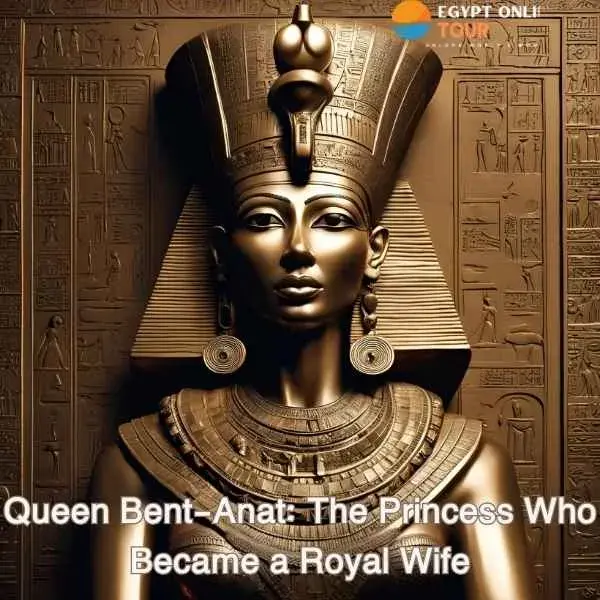
Bent-Anat is one of the most well-known daughters of King Ramesses II, who later have become one in all his royal other halves. Although Nefertari and Isis Nofret had been the most well-known of his other halves, Bent-Anat became a distinguished queen and appeared in lots of royal inscriptions and temples.
Her call means:
"Daughter of the goddess Anat" – Anat became the goddess of conflict and power withinside the historic Egyptian religion, reflecting the nonsecular importance of her call.
1. Her origins and lineage
Bent-Anat is the daughter of King Ramesses II, and is assumed to have been one of all his preferred daughters, as her call is cited in numerous inscriptions and temples.
There is confrontation about the identification of her mom, however, a few pupils propose that her mom might also additionally have been Queen Isis Nofret, despite the fact that there may be no conclusive proof for this.
The fact that she later became a royal spouse displays her outstanding popularity among the various sons of Ramesses II.
2. Her marriage to her father Ramesses II
Like her sister Maat-Hor-Neferu-Ra, Bent-Anat married her father Ramesses II, in step with Egyptian royal traditions that aimed to keep the purity of royal blood and support royal authority.
Although this can appear ordinary via way of means of present-day standards, this form of marriage became widespread withinside the Egyptian royal court, wherein the pharaoh became considered as a god, and marrying his kids to him reinforced the legitimacy of the rule.
Bent-Anat was no longer the Great Royal Wife, however, she became the various distinguished royal other halves.
3. Her Royal Titles
Queen Bent-Anat held numerous titles that meditated her popularity, including:
- "Great Royal Wife" – indicating that she became one in all Ramesses' respectable other halves.
- "Daughter of the King" – an identity that showed her royal lineage.
- "Lady of Upper and Lower Egypt" – reflecting her function as a queen with nonsecular popularity.
Her titles display that she became excessively popular withinside the royal court, even though she is no longer the maximum influential as compared to Nefertari or Isis-Nofret.
4. Her role inside the royal court
Bent-Anat became no longer only a princess, however performed a function in non secular rituals and royal celebrations, as she seemed in lots of inscriptions.
She appeared in numerous statues subsequent to Ramses II, reflecting her closeness to him.
Although she became no longer as politically energetic as Nefertari, she became an image of the royal princess who loved excessive popularity in the royal circle of relatives.
5. Her dating with the relaxation of the royal own circle of relatives
She had many siblings, the maximum well-known of whom are:
- Merneptah - who became the pharaoh after the dying of Ramses II.
- Ramesses - became the primary crown prince however died earlier than he may want to attain power.
- Khaemweset - became a distinguished priest and liable for the recuperation of temples.
Bent-Anat was no longer the mom of any pharaoh, however, she became a part of the effective royal circles that surrounded the throne of Ramses II.
6. Where is she cited in Egyptian antiquities?
The call of Bent-Anat has been discovered in numerous temples and inscriptions, indicating her royal popularity, including:
- The Ramesseum Temple – wherein she appears in inscriptions of the royal own circle of relatives.
- Abu Simbel Temple – she seems in inscriptions celebrating individuals of the royal own circle of relatives.
- Luxor Temple – her call is assumed to have been cited in royal inscriptions there.
Her presence in those websites displays her significance as a royal spouse and royal princess for the duration of the reign of Ramesses II.
7. Did she have kids?
There isn't any proof that Bent-Anat had kids, however, she might also additionally have performed a function in elevating Ramesses II’s kids from his different other halves.
The function of queens in historic Egypt was no longer restricted to childbirth, but additionally to representing the royal own circle of relatives in nonsecular and political ceremonies.
The genuine date of Bent-Anat’s dying has now no longer been determined, however, it's believed that she lived for a long time for the duration of the reign of Ramesses II.
She is assumed to have been buried withinside the Valley of the Queens, and her tomb can be QV71, however, her mummy has now no longer been discovered.
Some theories propose that she might also additionally have died earlier than Ramesses II, as she isn't cited in later inscriptions from his reign.
10. Why don’t we understand her?
The most important cause is that Queen Nefertari overshadowed the alternative other halves of Ramesses II in phrases of political and architectural influence.
Bent-Anat became no longer the mom of any later pharaoh, making her much less critical than Isis Nofret, the mom of Merneptah.
Her tomb has in no way been absolutely discovered, making her existence harder to examine than that of different queens.
Although Bent-Anat isn't one of the most well-known queens of historic Egypt, her popularity as the daughter and spouse of Ramesses II made her a critical part of the royal circle of relatives.
Details approximately her existence stay mysterious, however she stays one of the maximum distinguished princesses to obtain royal popularity
Queen Hatti: The Mysterious Wife of Ramses II
Queen Hatti is one of the better halves of King Ramses II, however she is taken into consideration certainly considered one among his maximum mysterious better halves, as there isn't much data about her in comparison to well-known queens which includes Nefertari or Isis Nofret. However, her marriage had a critical diplomatic dimension, as she became a Hittite princess whom Ramses II married as a part of the peace treaty with the Hittite Empire.
Her call "Hatti" is derived from the call of the Hittites, which means that she is a princess from the Hittite Kingdom, and it is believed that her authentic call becomes Mat Neferu Ra or Maat Hatti.
1. Her origins and lineage
- Hatti became a Hittite princess, the daughter of the Hittite king Hattusili III.
- Ramses II married her after signing the well-known peace treaty between Egypt and the Hittites in 1258 BC.
- This marriage became a part of the diplomatic alliance between the 2 superpowers at the time, with the intention of strengthening family members and stopping destiny wars.
- It is thought that the queen will be given an Egyptian call after her marriage, possibly "Matt Neferu-Ra", as this is not an unusual place whilst overseas princesses marry Egyptian kings.
2. The Peace Treaty and Her Marriage to Ramesses II
- Ramesses II had fought the Battle of Kadesh in opposition to the Hittites early in his reign, however neither side performed a decisive victory.
- After years of conflict, the 2 nations are determined to finish a peace treaty, that's taken into consideration the oldest written peace treaty in records.
- After signing the treaty, Ramesses II married the Hittite princess Hatti, therefore strengthening the alliance among Egypt and the Hittites.
- This marriage had a sturdy diplomatic character, however, it was no longer the best one, as Ramesses II later married every other Hittite princess, possibly Hatti's sister.
3. Her Royal Titles
- No clean authentic titles were observed for Queen Hatti, however, it's miles believed that she held titles which includes:
- "Great Royal Wife" - which means that she certainly considered one among his authentic better halves.
- "Hittite Princess" – a name that shows her overseas royal origin.
- "Beloved of the goddess Isis" – if she becomes given a brand new Egyptian call after marriage.
4. Did she have political influence?
- Although Hatti's marriage had a sturdy diplomatic character, there may be no proof that she performed a lively political function withinside the government.
- Unlike Nefertari, who participated in diplomatic correspondence, Hatti's call does now no longer seems lost in Egyptian documents.
- Nevertheless, her marriage became a sturdy signal of the steadiness of family members among Egypt and the Hittites, and may have contributed to preserving this stability.
5. Did she endure kids to Ramesses II?
There isn't any specific proof that Queen Hatti bore kids to Ramesses II.
It appears that the kids of Ramesses who have become heirs to the throne got here from different better halves, which includes Isis Nofret, who bore Pharaoh Merneptah.
But it isn't not likely that she bore kids who had been no longer politically distinguished and had been now no longer stated in royal inscriptions.
6. Where did she seem in Egyptian antiquities?
- There are few references to Queen Hatti, making her one of the mysterious queens withinside the records of Ramses II. However, it's miles believed that her call became stated in:
- The inscriptions of the Abu Simbel Temple - wherein the peace treaty between Egypt and the Hittites become immortalized.
- The inscriptions of the Karnak Temple - there may be proof indicating the celebrations of Ramses II's marriage to the Hittite princess.
- The diplomatic letters between Egypt and the Hittites - wherein the wedding of Ramses II to a Hittite princess became states after the signing of the treaty.
Despite the shortage of Egyptian proof, Hittite assets verify that the daughter of King Khatusili III married Ramses II, which confirms the presence of Queen Hatti in Egyptian records.
7. Her dating with the relaxation of the girls of the royal palace
- Queen Hatti was no longer the best spouse of Ramses II, however, was certainly considered one among many royal better halves.
- It is probable that her dating with Queen Isis Nofret and Queen Nefertari is no longer sturdy, as she got here to the royal courtroom docket after Nefertari's death.
- She isn't believed to have been Ramesses II's preferred spouse, however, she became a critical political disciple in Egyptian-Hittite family members.
8. Her destiny and death
- There isn't any unique data about whilst and the way Queen Hatti died.
- She may also have lived long after her marriage to Ramesses II, however she isn't stated in later royal inscriptions.
- She is thought to have been buried inside the Valley of the Queens, however her tomb has now no longer been observed.
- Since she is now no longer an Egyptian spouse, this will be the reason why she isn't stated in Egyptian monuments in comparison to different Egyptian queens.
10. Why will we now no longer realize lots about her?
- The most important purpose is that she become a foreigner and become now no longer a part of the authentic Egyptian royal family.
- Her number one function became diplomatic as opposed to inner politics, so she isn't stated in lots of inscriptions in Egyptian temples.
- She won't were Ramesses II's preferred spouse, which makes her point out in monuments limited.
- Queen Hatti is certainly considered one among Ramesses II's maximum mysterious better halves, however her function became critical in setting up peace among Egypt and the Hittites.
Although little is understood about her, her marriage to Ramses II became a critical historic step in global family members in historical times.
In addition to these main wives, Ramesses II had many concubines and secondary wives, resulting in a large number of children, said to have exceeded 100 sons and daughters.
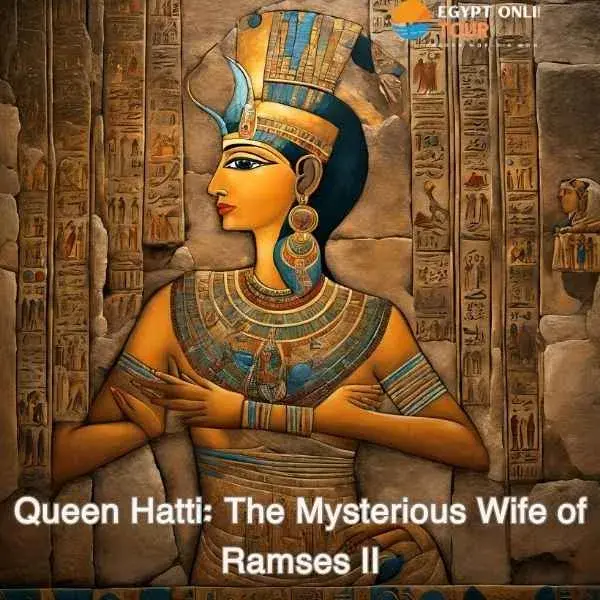
What did Ramses II do
Ramses II, called Ramses the Great, is one of the most celebrated and carried out pharaohs in historical Egyptian records. His movements throughout his reign (1279–1213 BC) had a long-lasting effect on Egypt, shaping its navy, culture, and architecture. Here are the important thing matters Ramses II did throughout his reign, primarily based totally on Ramesses: Egypt’s Greatest Pharaoh with the aid of using Joyce Tyldesley and different historic records:
1. Leading military campaigns
Ramses II become recognized for his navy leadership, particularly withinside the Battle of Kadesh (1274 BC), one in all the biggest chariot battles on record. Although the struggle became a stalemate, Ramses spun it as a victory, the use of it as a propaganda device to cement his picture as an amazing and triumphant ruler. His navy campaigns additionally prolonged Egypt's borders into Syria, Nubia, and elements of Canaan, making sure Egypt's dominance withinside the region.
As Tyldesley writes, "Ramses converted a luxurious stalemate into an excellent triumph withinside the eyes of his humans."
2. Built Monumental Temples and Statues
Ramses II became a prolific builder, leaving behind brilliant architectural achievements that symbolized Egypt’s strength and wealth.
• Abu Simbel: His most well-known construction, the Abu Simbel temples, had been carved into the mountainside, with significant statues of Ramses himself on the entrance. This temple was designed to immortalize him and his reign.
• The Ramesseum: Another large monument constructed with the aid of using Ramses II, which served as his mortuary temple.
• Karnak: Ramses II contributed to the development of the Temple of Karnak, one in all the biggest and maximum vital spiritual systems in Egypt.
Tyldesley notes, "His monuments had been designed now no longer simply to impress, however, to immortalize his divine repute."
3. Established Political Alliances
Ramses II additionally a professional diplomat. He maintained Egypt’s energy via alliances, inclusive of the well-known peace treaty with the Hittites after the Battle of Kadesh. This treaty, signed in 1258 BC, is frequently taken into consideration as one of the first recorded peace treaties in records and lasted for generations.
Ramses’ marriage to numerous overseas princesses, inclusive of one from the Hittites, helped solidify those alliances. Tyldesley explains, "Ramses used international relations as successfully as he used navy might."
4. Strengthened Egypt’s Economy and Culture
Ramses II labored to ensure Egypt’s prosperity, both militarily and economically. His lengthy reign supplied stability, permitting Egypt to flourish in trade, agriculture, and culture. He promoted spiritual and creative endeavors, commissioning artistic endeavors that bolstered his divine repute and Egypt’s energy.
He additionally labored on revitalizing Egypt's economy, and beneath neath his leadership, Egypt have become a superpower of the historical world.
5. Left a Legacy Through His Family
Ramses II fathered about a hundred children, making sure that his own circle of relatives become well-represented in positions of strength and influence. Many of his sons held navy or spiritual posts, and his thirteenth son, Merneptah, succeeded him as pharaoh.
6. Promoted Himself as a Living God
Ramses II cautiously curated his picture as each a king and a god. His monuments, statues, and inscriptions depicted him as divine and eternal, making sure that his legacy might outlive him. His lengthy reign allowed him to task this picture to the Egyptian humans and beyond.
As Tyldesley writes, "Ramses’ call remained synonymous with kingship lengthy after his frame became laid to relaxation withinside the Valley of the Kings."
7. Had a Lasting Impact on Egyptian History
Ramses II dominated for sixty six years, making him one of the longest-reigning pharaohs in records. His reign is frequently visible because the peak of Egyptian strength, and his navy, architectural, and diplomatic achievements set a general for destiny rulers.
In summary, Ramses II constructed an empire, elevated Egypt’s borders, created huge architecture, secured political alliances, and left an eternal legacy that also resonates today. As Tyldesley concludes, "Ramses the Great converted Egypt right into a superpower, leaving a legacy that could endure for millennia.
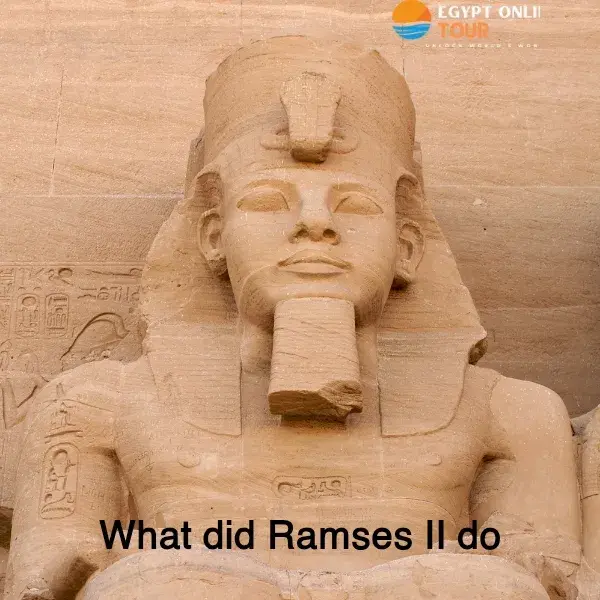
Why was Ramses ii important?
Ramses II, Ramses the Great, was one of Egypt's greatest pharaohs in many regards, as Joyce Tyldesley and other sources highlight in Ramesses: Egypt’s Greatest Pharaoh. His remarkable 66-year reign (1279–1213 BC) left a lasting impact on Egypt’s military, cultural achievements, and monumental architecture.
1. Ramses II’s military conquests secured Egypt’s dominance in the ancient world. One of his most notable feats was leading the Battle of Kadesh against the Hittites. Although the battle ended in a draw, Ramses famously depicted it as a victory, reinforcing his reputation as a successful leader. His campaigns in regions like Syria, Canaan, and Nubia expanded Egypt’s borders and safeguarded its influence.
2. Ramses 2 was a prolific builder whose constructions reflected Egypt's stability and wealth. The Abu Simbel temples, carved into a mountainside, are among his most famous creations. These massive temples featured colossal statues of Ramses, designed to glorify himself as a divine figure and honor the gods.
3. Ramses II was a skilled diplomat. One of his greatest accomplishments was the signing of a peace treaty with the Hittites in 1258 BC, following the Battle of Kadesh.
4. Longevity and Stability: Ramses II’s lengthy rule brought stability and prosperity to Egypt.
5. Legacy and Influence on Future Generations: he set a high standard for future pharaohs. His military successes, monumental constructions, and diplomatic achievements left a legacy that endured well beyond his lifetime. His prolonged rule helped secure Egypt’s dominance.
6. Perception as a Divine Ruler: as he cultivated an image of himself as a living god. Monumental inscriptions and artwork depicted him as both immortal and divine, reinforcing his authority and influence.
Ramses II’s significance lies in his military expansion, transformative architectural endeavors, and the elevation of Egypt to a superpower of the ancient world. His reign fostered peace and prosperity, earning him a reputation as one of history's greatest rulers. Tyldesley concludes, “Ramses the Great made Egypt a superpower, leaving a legacy that would endure for millennia.”
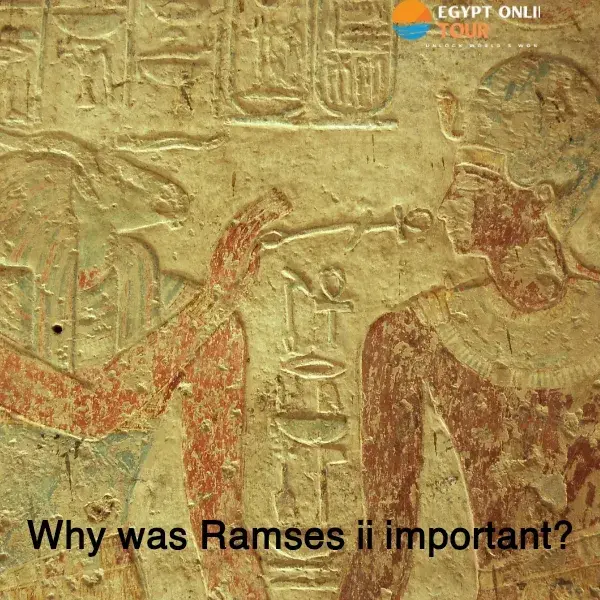
FAQ
How did Ramses II die?
Ramses II died in 1213 BC after ruling for an extraordinary 66 years. He was believed to be around 90 years old at the time of his death, which was exceptional for his era. The exact cause of his death is not known, but it is generally thought that he died of natural causes, likely old age. Some sources suggest that he may have suffered from arteriosclerosis, a condition related to aging.
Why did Ramses II marry his daughter?
Ramses II married his daughter, Meritamun, to maintain royal bloodlines and to consolidate his power. Marrying within the royal family was a common practice in ancient Egypt, as it helped to preserve the purity of the royal bloodline. By marrying his daughter, Ramses ensured that the succession remained within his own family, and it also reinforced the divine nature of his rule. His union with Meritamun was politically significant, and it was part of the pharaoh's strategy to solidify control over the throne.
Family Tree of Ramses II
Ramses II lived a big family life, and it is calculated that he produced approximately 100 offspring. Ramses II enjoyed numerous concubines and numerous wives, but Nefertari, whom Ramses cherished and whom many of Ramses' monuments illustrate, was most significant one of them. Ramses' 13th son, Merneptah, succeeded Ramses when Ramses died and became pharaoh.
Here is a reduced family tree for Ramses II:
Father: Seti I (Pharaoh of Egypt)
Mother: Tuya (Queen of Egypt)
Wife: Nefertari (Principal wife, queen)
Distinguished Kids:
Merneptah (the 13th son, who took over)
Amunherkhopshef (son, likely a high-ranking official)
A son, a priest and famous for restoration work in monuments in Egypt
Seti II (son, who played important roles during Ramses II's time in office)
The Ramses II family played an important part in protecting his heritage, with his sons holding important posts in both religion and in the army, providing continuity in his bloodline.
Conclusion:
The times and life of Ramses II embody the peak of ancient Egyptian society. His numerous marriages, prolific family, and astounding accomplishments in ruling, engineering, and conquest guaranteed him a lasting legend in a position unmatched for a king. Learning about his life teaches one not only about the glory of ancient Egypt but about humanity's age-old desire for immortality and an enduring heritage. That such a gargantuan figure continues to captivate and awe even centuries and centuries later is a reflection that history's greatest leaders leave a lasting mark that will not soon fade.
let us hear from you and book your Egypt Tour Packages Now
Popular Categories
Popular Posts

Top Alexandria Beaches You Must Visit 2026

What are the important holidays in Egypt?
